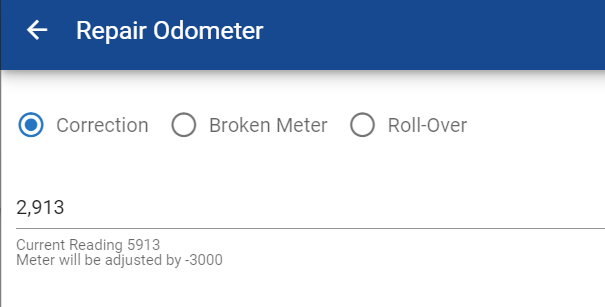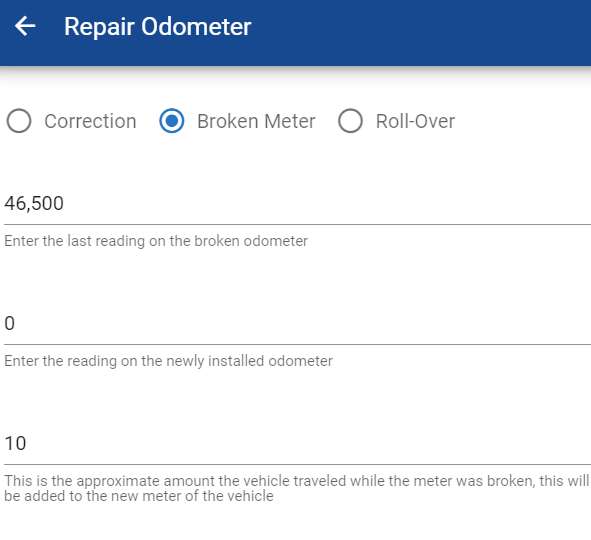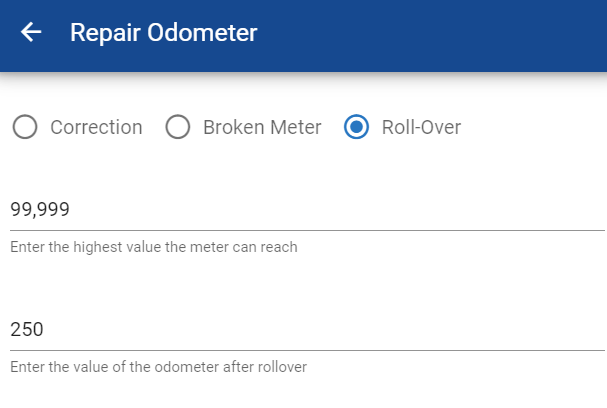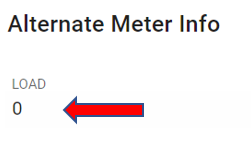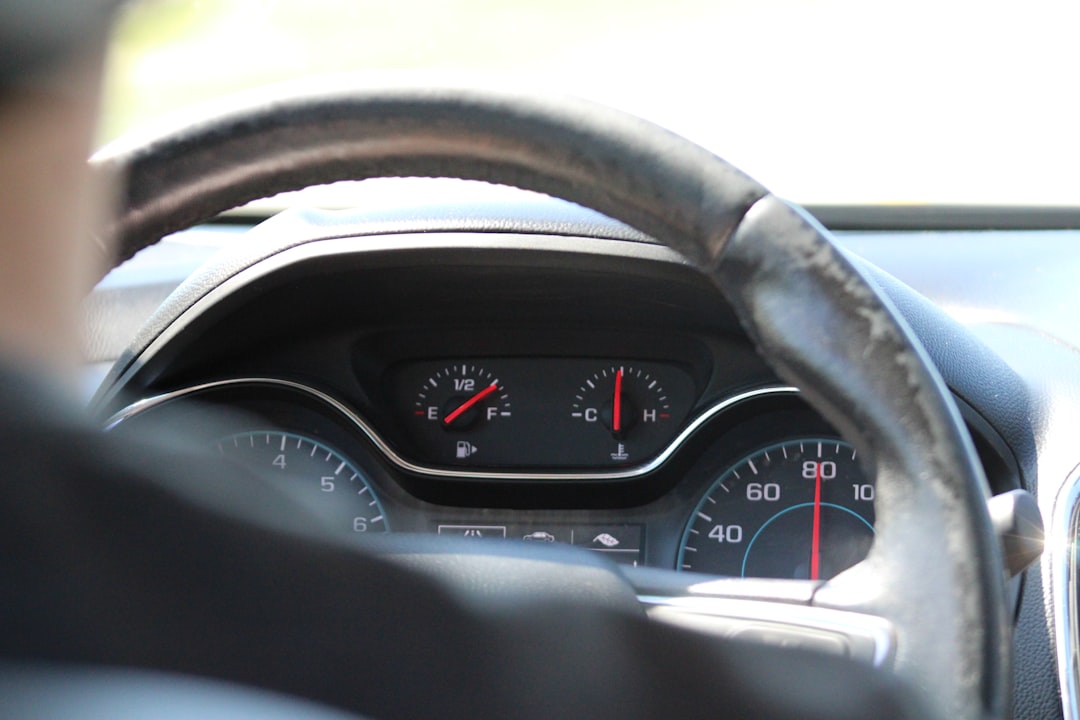
RTA Web - Meter Readings
Understanding the Various Meter Types
RTA tracks several types of asset meters. It's important to understand how they work because asset cost per mile and miles per gallon reports use the various meters. The meter types are as follows:
Primary Meter: This is the current asset meter reading, sometimes referred to as the work meter. It is the most up-to-date meter reading and is updated throughout the RTA system.
Fuel Meter: This is the most up-to-date meter reading entered through the options in the Fuel Inventory module. This is tracked separately from the primary meter to ensure MPG figures are properly reported.
Alternate Meter: This is the meter reading for other types of meters that might be on the asset (e.g., hours, yards, cases). This meter has no ties to the Primary or Fuel meters.
Life Miles: This is the accumulated miles traveled for the life of the asset. The life miles can have the same or higher reading than the Primary and Fuel meters, but never a lower reading. Life miles continue to increase even though Primary meters may rollover or get reset to 0 when replaced.
All of these are displayed in the asset file in RTA Web on the Asset Management Tab.
Primary and Alternate Meter Readings should be updated via Work Orders. Refer to Meters in Work Orders for instructions on updating meters through Work Orders.
Primary Meter Reading
Viewable
The current Primary Meter Reading can be seen in the following areas:
Asset File - Primary Information Banner
Asset File - Asset Management Tab
Work Order - Asset Information Banner
Editing
The Primary Meter reading can be edited from the asset file and through work orders.
Work Orders should have the primary meter updated to the current reading. If there is an error in the meter reading, that should be done through the vehicle file using one of the options below.
Refer to WO Meter Updates for information on updating a primary meter through a work order.
Correction
Errors can happen when meter readings are updated or input when adding a vehicle. RTA Web can help with correcting a meter reading by following the below steps.
Broken Meter
Replacing a broken meter will need to be done on occasion. Follow the steps below when this occurs.
Rollover
Once an odometer reaches its max count, it will roll back over to zero and start over. Ensuring that the asset file is capturing the full life correctly, an adjustment would need to be made. Follow the steps below when an odometer rollover occurs.
Alternate Meters
An alternate meter may be another meter such as an engine or component hour meter OR it may represent items transported by the asset such as passengers, cases, boxes, tons, yards, and pallets.
Up to 4 alternate meters can be assigned to an asset. Once they are assigned, they can be viewed in the Alternate Meter Banner in the asset file.
Alternate meters can be used to help determine when PM services are needed. For example, if the asset has a standard odometer and an hours meter, the hours meter can be set up as an alternate meter and the PMs can be set up to be tracked by days, miles, and hours.
Setting Up Alternate Meter Types
Prior to assigning an alternate meter to an asset, the types/descriptions of alternate meters available for use need to be created.
To define the types of alternate meters available for use in asset files, follow the below steps.
Under the Assets tab in the main menu, click on Settings
Click on Alt Meters
On the Alt Meter Maintenance Screen, click the New Alt Meter Button
On the added line, type in the alternate meter description/type to be available
Click the check mark to save the new description
The Alt Meters option under the Admin System Settings is also where a user can delete an alternate meter type and edit those descriptions as well.
Adding Alternate Meters to the Vehicle
Once the alternate meter types have been set up, they can be applied in to assets. An asset can have up to 4 alternate meters assigned to it.
Follow the below steps to include alternate meters into the asset file.
Editing Alternate Meter readings
Once the alternate meter types and values have been set up, they can be edited in the asset file. Refer to the Adding Alternate Meters to the Asset section of this document for set up instructions.
Follow the below steps to include alternate meters into the vehicle file.


